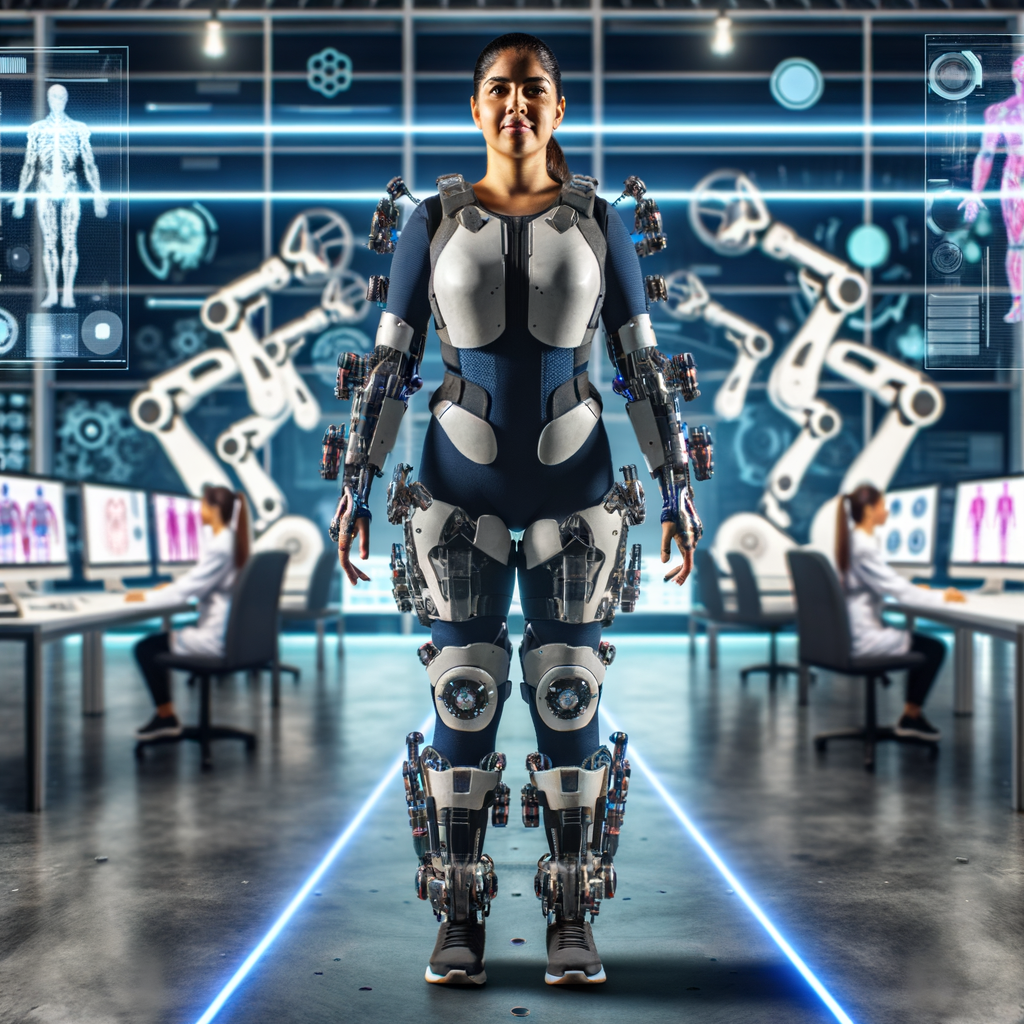Amazon’s AR Glasses Push
In its constant quest for efficiency bordering on the Orwellian, Amazon is reportedly enhancing its focus on blending augmented reality (AR) with human labor. The tech giant, according to sources, is exploring the option of equipping its delivery drivers with AR glasses to streamline operations further—because why wait for robots when you can turn your drivers into partial cyborgs?
If you’re imagining a future where drivers don headsets reminiscent of sci-fi films, you’re not far from the mark. The goal? To increase efficiency, reduce human error, and squeeze even more productivity from workers.
At least until the robots are good enough to take over.
What’s The Idea Behind AR Glasses for Drivers?
There’s no doubt that Amazon is already a paragon of logistics efficiency. From its precisely synchronized warehousing techniques to algorithms that predict our shopping habits, the company has a well-oiled machine running in the background. However, they appear to want more and believe AR glasses could be part of the solution.
Imagine this: a delivery driver with AR glasses is constantly fed real-time data, including the shortest routes, specific details about customer drop-offs, immediate package scans, and even alerts for hazardous driving conditions. These devices could superimpose package information and navigation cues right onto the visual field, reducing the amount of time drivers spend looking at maps or entering delivery details.
The result? Amazon hopes for faster and more accurate deliveries, faster turnaround times, and an overall reduction in ancillary delays.
But let’s be real: AR glasses could also be seen as just that next layer of surveillance. And Amazon isn’t exactly known for its hands-off approach with employee management.
Why Now?
This AR glasses initiative can be seen as part of Amazon’s attempt to bridge the gap between full automation and a still-human workforce. While many delivery platforms, including Amazon, are already investing heavily in autonomous robots and drones for package deliveries, the existing technology simply isn’t ready to replace delivery drivers entirely—yet.
So, in the interim, Amazon is targeting what it sees as a path toward a hybrid system: effectively turning humans into interfaces conditioned to think and work algorithmically. It’s efficiency by design, only you’re still dealing with humans, and thus, Amazon is turning to augmented reality as a stopgap solution on the runway to automation heaven.
Of course, to be fair, this moves beyond merely trying to control; it reflects Amazon’s bet that logistical gains can be supercharged through technological augmentation. AR glasses, in theory, would leave drivers less distracted by handheld gadgets, reducing glance times at smartphones or route-planners, and allowing smooth, uninterrupted operation—keeping those precious delivery times on track.
It’s a classic plan of achieving short-term goals via pseudo-high tech until the dream of fully autonomous workers (a.k.a. robots, drones) becomes a reality.
Is This Just a Beta for Something Bigger?
While introducing AR glasses seems like a futuristic move, cynics—and even casual observers—might consider this another stepping stone to Amazon’s longer-term ambitions. Multiple reports suggest Amazon is doubling down on its robotics research efforts, indicating that the AR glasses initiative may just be a waypoint.
Here’s what is likely:
Amazon isn’t making these decisions lightly; such moves are efficient and cost-effective in the long run. Once the technology matures enough, robotic couriers or autonomous vehicles may replace the expensive human element.
But in the meantime, gifting drivers with AR glasses feels like a beta test for systems that could exclusively cater to the machines of the future.
The Human Element: Did Someone Say “More Oversight”?
Enhancing efficiency using tech isn’t a new strategy for Amazon. They’ve already equipped their warehouse workers with similar tech such as AI-based tracking tools that monitor every facet of their daily routines—from bathroom breaks to productivity shifts. AR glasses for delivery sounds like more of the same, creeping into the lives of those handling the last mile of Amazon’s giant logistical network.
While it’s not entirely dystopian yet, isn’t this another risk of further micro-managing human behavior? It’s hard to argue that AR-added efficiencies are strictly cut-and-dry. The glasses will no doubt streamline certain parts of a driver’s day, but in practice, these could also act as a window into how workers perform constantly, feeding data back to Amazon’s mainframe for further optimization.
Think Big Brother: only with really nice safety goggles.
The Trade-Off
One could argue that using AR glasses to cut down time spent on delivery improvements is neutral for all parties. Drivers are more productive, customers get faster packages, and Amazon continues to dominate the logistic space. On the other hand, the trade-off could mean giving Amazon new ways to micromanage its workforce, invading its staff’s autonomy—and sanity—in the name of progress.
Regardless of where this goes, it’s clear that Amazon’s ultimate destination is a world where robots or AI do most of the work. Until then, they just want to make humans a bit more robotic with this “assistive tech.”
The timeline when fully autonomous delivery becomes a reality is still unclear. But, given Amazon’s pace, it’s only a matter of time before AR-equipped humans yield to machines entirely.
Conclusion: Efficiency at What Cost?
Amazon’s foray into AR glasses marks a poignant chapter in its pursuit of workplace efficiency. A world where glasses could cut down on errors while supercharging productivity sounds appealing in some respects—who doesn’t want fewer mishaps in their delivery experience? But coupled with Amazon’s notorious track record of micromanagement, there’s also plenty to be skeptical about.
In terms of tech adoption, it’s undeniable that AR in the workspace is a significant step forward. However, the ethical and privacy implications of AI-empowered productivity tools monitoring every move—let alone reducing workers to extensions of the machine—are looming questions.
For now, we brace ourselves for a world where delivery people might be greeting our doorsteps with high-tech glasses. The robots, however? They’ll be right behind.

